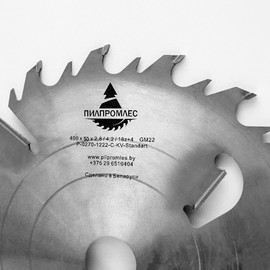Circular saws
















Varieties of saw blades for woodworking.
There are several types of saw blades for woodworking, which differ in size, shape of teeth, number of teeth and purpose.
- Discs for longitudinal sawing. This type of discs is used for longitudinal sawing of wood along the fibers. They have fewer teeth than other types of discs, but they are larger in size and have a higher rotation speed. They can be used on woodworking machines and on hand saws.
- Discs for cross-sawing. These discs are used for cross-sawing wood against fibers. They have a larger number of teeth, which have a special shape that allows you to cut wood without overheating the material. They can be used on machine tools and hand saws.
- Disks for universal use. This type of discs can be used for both longitudinal and transverse sawing. They have a large number of teeth, which ensures a clean cut and the possibility of use on different materials.
Features and characteristics
The main parameters of a circular saw on wood are displayed in the marking applied to its surface.
One of the main characteristics is its diameter. For small jobs, smaller diameter discs can be used, but for larger jobs, it is better to choose larger diameter discs. Another important characteristic is the thickness of the disc, which determines its strength and resistance to wear.
It is also worth paying attention to the number of teeth at the disk. For thin material, you need to choose discs with a large number of teeth, and for thick material - with fewer teeth. Some discs have special teeth for processing specific materials, such as MDF or plywood.
Another important factor is the material from which the disc is made. Woodworking discs can be made of various materials, such as carbon steel, hard alloy alloys, diamonds and other materials. Each material has its own advantages and disadvantages, so you should choose a disk depending on the task and the material that you will process.
In addition, it is worth paying attention to the shape of the teeth of the disc. Some discs have teeth in the form of a trapezoid, others - in the form of a trapezoidal wedge. Each shape of the teeth provides a specific type of cut and angle of cut.
Finally, it is worth paying attention to the speed of rotation of the disk. It must correspond to the maximum speed recommended by the tool manufacturer.
